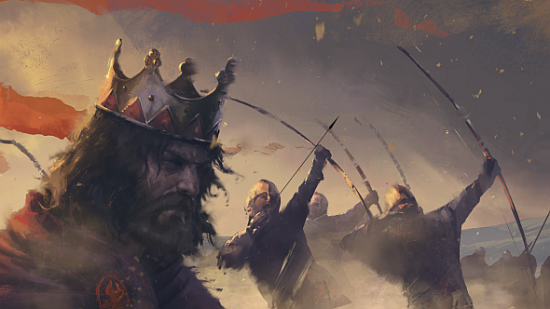Thrones of Britannia: A Total War Saga is almost upon us. It’s the first in what developers Creative Assembly promise will be a series of more focused (spatially and temporally) spin-offs. Who knows where we’ll end up in the fullness of time – the Cuban Missle Crisis? Hmm, no, not much action there. Ancient Judea? Nope, covered off in Rome II already. Got it – feudal Japan! Actually, no – no, that’s been done too, hasnt it. Dang. Well we’re sure they’ll think of something in, y’know, all of recorded history to hit that strategic sweet spot.
So what’s new in Thones of Britannia, the debut spin-off? From how the factions play (English! Welsh! Gaelic! Vikings! Oh my) to how you’ll win (or lose, by foolishly paying no heed to our sage words), here’s everything you need to know about Thrones of Britannia and what it offers.
Love being the overlord of the land from the comfort of your desk? Try our favourite PC strategy games on for size, your highness.
Total War: Thrones of Britannia setting
Thrones is set in the British Isles in 878 AD. Specifically, the game starts just months after the Battle of Edington, in which the Saxon king Alfred decisively defeated the Great Viking Army, led by Guthrum.
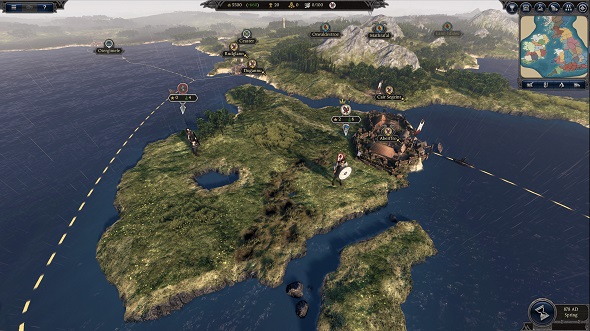
In the following peace treaty, swathes of northern and eastern England were ceded to the Vikings, establishing a realm called the Danelaw (because Danes lived there under their own laws). Though this first wave of Vikings nativised to some extent – Guthrum even converted to Christianity – asking them to live alongside the people they’d been fighting for a decade made for a predictably uneasy peace.
With the settled Vikings testing the limits of the treaty with a cheeky raid every now and then, a second wave of more traditional Viking raiders looking greedily at Britannia, and plenty of native kings ready to indulge their ambition, it is a tense time and the future – potentially – belongs to anyone.
Total War: Thrones of Britannia victory conditions
There are three victory types in Thrones of Britannia: the familiar conquest victory, the fame victory, and the Kingdom victory. Conquest is well understood by now, whereas fame challenges you to grow your reputation in various ways – building famous churches, certain character skills, and again, conquest, will all help.
The Kingdom victory should excite history buffs. It considers your faction’s historical aspirations to nationhood, and gives you a path to achieve them, paved with objectives that vary by faction.
All three of these basic victories have short and long versions, depending on how many hours of your life you’re prepared to sacrifice to the strategy gods.
Total War: Thrones of Britannia ultimate victory and invasion
When you complete the ‘long’ version of any victory type, you will unlock an “ultimate victory condition” in the form of a “significant endgame challenge,” as CA put it. Watch me make an overcomplicated and entirely inaccurate guess at what this might be in the video above.
We now know what this actually is. Similarly to the arrival of Attila or Archaon in their own games, the ultimate victory challenges you to defeat a big horde of foreign invaders. Depending on where your territory is, these can be Norsemen (if your territory is mainly in the north), Danes (if it’s in the Midlands), or Normans (if you hold the south). The Danes and Norsemen share some Viking units, but the Norman army roster is largely unique – and includes knights. Beat all the invading armies to win the ultimate victory, but note that if you’re on Legendary difficulty, you’ll have to deal with all three!
Clearly, 1066 is an inspiration for this invasion, but Creative Assembly don’t want to railroad you into recreating a specific historical event, which in hindsight, probably should have been obvious. Incidentally, we spoke with the devs aboutwhat makes Total War’s first Saga specialin a separate piece.
Total War: Thrones of Britannia cultures and factions
There are ten playable factions in Thrones, split evenly across five different cultural groups. Both factions will share their cultural traits and victory conditions, but are further distinguished by traits that are unique to each faction.
English Kingdoms
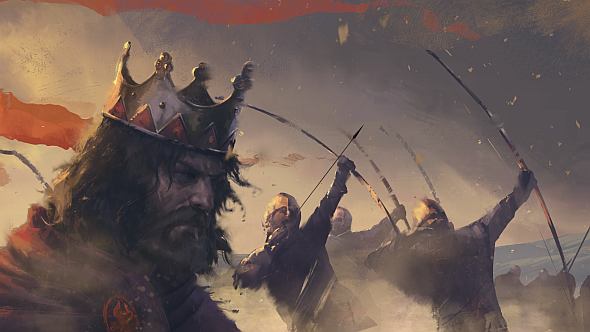
The two English Kingdoms are West Seaxe (modern Wessex), led by the legendary Alfred the Great, and Mierce (modern Mercia).
The English cultural features are:
- Fyrd: part-time soldiers, pledged to leave their farms for military service each year. Can recruit levy units based on the number of owned settlements.
- +25% commander’s aura (all characters).
- +5 melee skill for all units when defending (all forces).
The ultimate winner of the Game of Thrones (of Britannia) was Alfred, later styled the Great, king of West Seaxe. His scholarly interests belied his skill as a general, and he spent most of his reign successfully kicking Viking tail. By the time of his death in 899, he had become the dominant ruler in England. The game starts soon after his defeat of the first Viking invasion, with the Vikings already begging for another thrashing (violating the peace treaty, whatever).
West Seaxe’s faction features are:
- Witan: the Angle-Saxon national assembly meets to discuss progress and make new proposals regarding West Seaxe’s future.
- +5 XP for generals per turn.
- Strong armoured sword and spear infantry, impressive late-game cavalry.
Mierce was once the greatest Anglo-Saxon kingdom in Britannia, but it has suffered after the Viking invasion, having ceded much of its eastern territory. They are led by Ceolwulf II, who was Mierce’s last independent king in real life. He died in 879 – the year after Thrones of Britannia starts – after which Mierce was folded into Alfred’s Wessex. Can you do better?
Mierce’s faction features are:
- Hoards: Miercen subjects expect the kingdom’s wealth to be distributed between the nobles, the army, and the people.
- +5 unit morale when general is alive.
- Strong armoured sword and spear infantry, impressive late-game cavalry.
Welsh Kingdoms
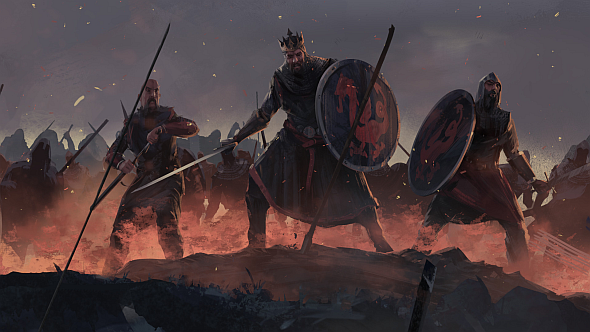
With Britannia having been invaded by the Saxons and now by the Vikings, few in the isles could be said to be ‘true Britons’, but these kingdoms have more claim than most. Enamoured with stories of Arthur and the deeds of their ancestors, Gwined and Strat Clut share a unique ‘heroism’ mechanic.
The Welsh Kingdoms’ cultural features are:
- Heroism: Wales is a land of heroes. Earn heroism by winning battles, owning Welsh land, and ranking up generals to gain bonuses.
- +5 supplies in own or allied territory (all forces).
- +5 unit morale in own regions (all forces).
The Welsh of Gwined are led by Anaraut, successor to the respected King Rhodri Mawr. Gwined thrived under Anaraut’s father, who grew its borders while staving off the Vikings, leaving you with an easy start position if you choose to step into his son’s shoes. Gwined can also field the longbowmen who would go on to become such a force on medieval battlefields.
Gwined’s faction features are:
- General’s Followers: increased bonuses from followers.
- Legendary Battle Sites: stand in the shoes of heroes long dead and share in their glory. Undertake missions to occupy settlements or become allied with your Welsh neighbours.
- Very strong spearmen, good missile infantry, and exceptional archers.
Strat Clut – modern Strathclyde – is a kingdom of the Old North, standing firm against waves of invaders. The Vikings may prove too much for this isolated land and its new king, Run – raiders from Dyflin have besieged his stronghold and kidnapped his family. Hence, Strat Clut’s campaign is rated ‘hard’.
Strat Clut’s faction features are:
- Map Control: a connected kingdom is stronger by definition. Own settlements next to each other to earn bonuses.
- Capture major settlements for the chance to trigger missions.
- Very strong spearmen, good missile infantry, and exceptional cavalry.
Gaelic Kingdoms
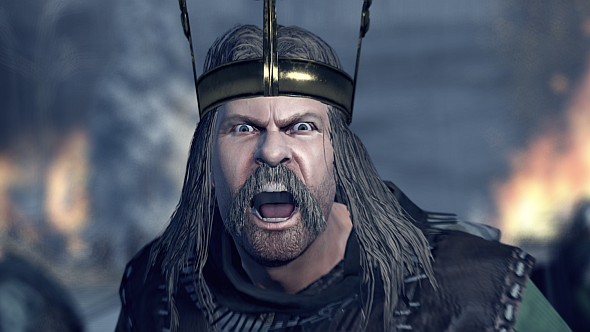
Representing the
The Gaelic Kingdoms’ cultural features are:
- Legitimacy: Silence those who question your divine right to rule. Own cultural land and defend allies to gain unique bonuses.
- +2 Loyalty.
- +25% Church income (all regions).
Circenn is a land of misty hills on the east coast of Scotland, inhabited by Picts, Gaels, and others driven to Britannia’s limits by her invaders. Its capital is Scoan, once home to the Stone of Destiny – for Aed, Circenn’s new king, finding this mythic object could be just the thing to inspire courage at home and respect abroad.
Circenn’s faction features are:
- Stone of Destiny: legends say the Stone of Destiny brings wealth to its bearer. Undertake a mission to find it.
- Has access to the unique Souterrain building, which gives immunity to snow attrition.
- Good all-round infantry with some good spearmen. Very strong missile units and powerful, unique crossbowmen.
Mide is a kingdom at the very heart of Ireland – in terms geographic, political, intellectual, and spiritual. Its ambitious king, Flann, wants to be named High King of Ireland, and as we found when we tried his campaign, has enough respect from his peers to pull it off (if you don’t get him killed). Good fun for the diplomats among you – see also the cultural and factional bonuses.
Mide’s faction features are:
- Fair of Tailtiu: an annual event, the fair sees people gather for games, funerals, and even marriage contracts. Get diplomatic bonuses with allies via unique events. To hold the fair, make sure funds are available, and your capital is not under siege.
- +10 diplomatic bonus towards all Irish factions.
- Excellent mid-to-high tier sword infantry, including unique Gallowglass infantry, and exceptional javelin infantry.
Great Viking Army
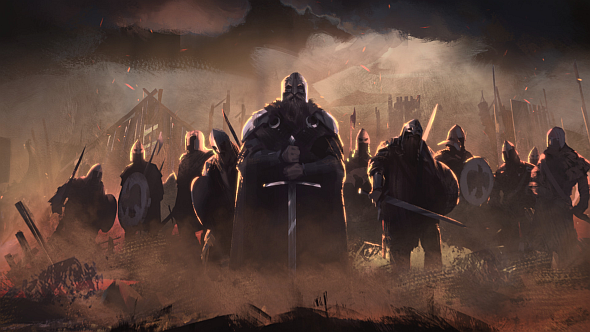
Defeated by Alfred just as the game starts, the remnants of the Great Viking Army have been bought off by offers of land and gold, and are now settling awkwardly into life in England. To represent this, they have to appease both the natives and their own raiders.
The Great Viking Army’s cultural features are:
- Income: +150% income from raiding and sacking (faction wide).
- This faction experiences a boost to morale when fighting against its hated Anglo-Saxon enemies (all forces).
- Here King: the king of the Danes here in Britannia must play a delicate game to stay at the top. Find the balance between appeasing the English and your army: failing to do the former will harm public order, influence, and diplomacy with English factions, while failing to do the latter will harm army experience, and recruitment and upkeep costs.
East Engle
Though handed the choice lands of modern East Anglia, Guthrum, the lord of the Great Viking Army, hungers for more. Though he’s theoretically at peace with West Seaxe, there are rival Vikings and other native kings to whom he owes no such consideration. With wealthy lands, aggressive bonuses, and access to arguably the game’s most powerful infantry, East Engle looks like a great choice if you want to do some fighting.
East Engle’s factional features are:
- Guthrum’s Will: the king of the Danelaw rewards those who raid and conquer in his name. Get missions to fight and unique rewards for your aggression.
- +5 melee skill for all units when in enemy territory.
- Very strong axe infantry and good balance of other infantry units. Has access to Berserkers and powerful Anglian Champions.
Led by Guthfrid, this splinter of the Great Viking Army rules the former Anglo-Saxon kingdom of Northymbre from their capital at Eoferwic (which you might remember as the hometown of Uhtred from The Last Kingdom). As a former slave, Guthfrid struggles with disloyal characters.
Northymbre’s factional features are:
- Ragnar’s Legacy: the Swedish king Ragnar was killed in battle fighting the Anglo-Saxons. Seek revenge for his death!
- +10% charge for all units (all forces).
- Very strong axe infantry. Has access to Berserkers. Good all-round infantry, including powerful Northumbrian Spearmen.
Viking Sea Kings
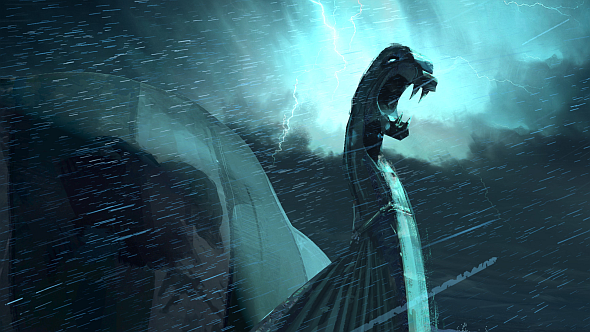
Representing a second wave of Vikings who still live the old way – by seaborne raiding – the Sea Kings
The Sea Kings’ cultural features are:
- Expedition: the world is yours for the taking – send your ships to conquer new lands.
- Tribute: other kingdoms pay tribute as a sign of their submission. Get tribute from other factions to gain bonuses.
- Immune to seasickness and high seas attrition.
After a few raids, some Vikings decided they liked Ireland enough to stay there. Fifty years later, Dyflin – modern Dublin – became the most important of their fortified coastal bases, or longphorts. Led by the belligerent Bardr, Dyflin are much-hated by their Irish neighbours, and must contend with a few early wars. Further emphasising that they are Not Very Nice People Actually, Dyflin hosts the largest slave market in Britannia.
Dyflin’s faction features are:
- Slave Trade: for some, the keeping of slaves is an integral part of their culture. Gain slaves by winning battles and raiding, sacking, or occupying settlements. Sell them each turn and improve income by building Thrall Traders.
- -15% Construction cost (all regions).
- Very strong axe infantry. Has access to Berserkers. Good general unit diversity and strong javelinmen.
After many raids, the Vikings eventually settled the rugged islands off the west coast of Scotland. They named their new kingdom Sudreyar, or the Southern Isles, as opposed to their northern conquests of Orkney and Shetland. Though barren, Sudreyar is large and secure, and a perfect base from which to plunder richer lands.
Sudreyar’s faction features are:
- Field of Assembly: an assembly of free men and lawmakers who meet to decide the matters of the day. It sends the army on missions to keep them busy.
- +5 supplies in foreign territory (all forces).
- Very strong axe and sword infantry. Has access to Berserkers and Norse units. Good unit diversity.
